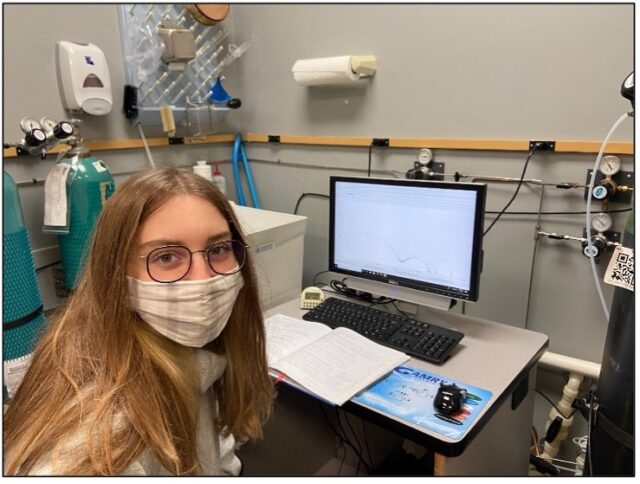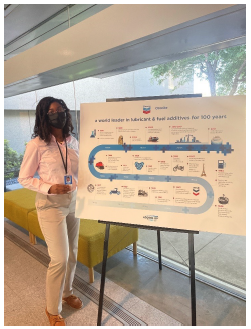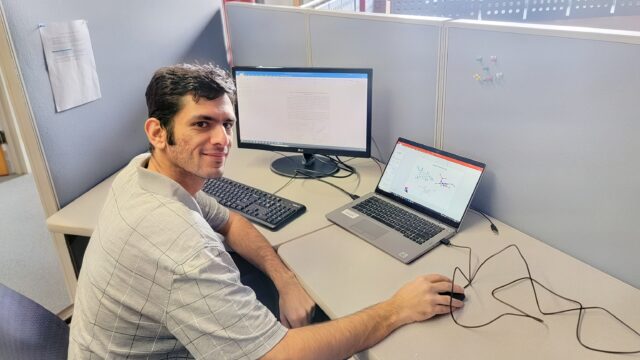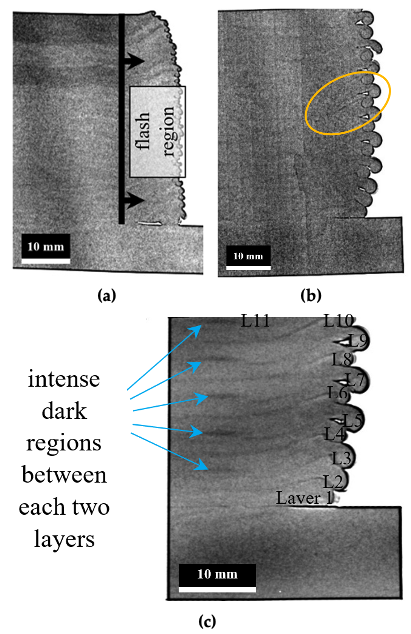2023
Index:
Innovative LAMDA Program Provides Research and Industry Experience for Undergraduates
LAMDA Seed Awards Facilitate Student Exploration of Novel Manufacturing Technologies and STEM Topics
New and improved materials with shape memory properties engineered with computational discovery
Embedding Conductors Using MELD Additive Friction Stir Deposition (AFSD) Manufacturing
A Hybrid Shape Memory Polymer-Filled Metallic Foam Composite with Multiple Functionality
Automated Defect Analysis of Additively Fabricated Metallic Parts using Deep Convolutional Neural Networks
Neutron Imaging of Al6061 Prepared by Solid-State Friction Stir Additive Manufacturing
Computationally-guided design of new multiphase alloys
New Hybrid Polymeric Syntactic Foams Developed
New laminated vitrimer composites developed with unique restoration properties
Strong and flexible 4D printed lightweight metamaterials with record high recovery stress
More: 2022 and earlier
Innovative LAMDA Program Provides Research and Industry Experience for Undergraduates
The Louisiana Materials Design Alliance (LAMDA) developed an innovative program for Louisiana undergraduate students called “Extended/Reverse Research Experiences for Undergraduates (E/RREU).” The program supports the development of a STEM workforce that meets the needs of advanced manufacturing industries and enhances the impact of NSF investments in the jurisdiction.
The program provides opportunities for students to gain invaluable analytical and critical thinking research skills through engagement with LAMDA researchers and hands-on experience through industrial partners. The research experiences often earn the students co-authorship on published research papers. These academic-industrial experiences enhance the impact of NSF investments in the jurisdiction and further develop the industrial partnerships.
The E/RREU is a year-long research program in which undergraduate students work with LAMDA investigators during the academic year and spend all or part of the summer in an industrial company, national lab, or leading academic research and development group.
So far, the new program has provided E/RREU experiences for 18 undergraduate students who performed research for LAMDA research projects at Louisiana Tech University, Louisiana State University, and Tulane University, and summer internships at industrial companies and laboratories such as the NASA Marshall Space Flight Center, Entergy, Chevron, the Institute for Human and Machine Cognition, and Forte & Tablada, Inc. Students continue to receive mentoring by LAMDA researchers that will help them navigate their journeys to graduate school and/or the workforce.
Louisiana Tech University undergraduate student, Sarah Campbell, was mentored by LAMDA researcher, Dr. Erica Murray, and had a summer internship at Graphics Paper.
Southern University undergraduate student, Raelyn Henderson, was mentored during the school year by LAMDA researcher, Dr. Stephen Akwaboa, and had a summer internship at Chevron.
LAMDA Seed Awards Facilitate Student Exploration of Novel Manufacturing Technologies and STEM Topics
The Louisiana Materials Design Alliance (LAMDA) developed a STEM Outreach track for the Seed Award program to further K-12 outreach and education in STEM and advanced manufacturing.
Six awardees have been selected for funding in the new program so far, and are providing high quality STEM programming and stimulating interest in STEM careers. The awards range from programming aquatic robot eels, multi-disciplinary outreach in the physical sciences to middle school students in rural parishes, additive manufacturing summer camps, and mechanical engineering workshops for high school students.
In one example, LAMDA seed award recipient, Dr. Genevieve Palardy, Assistant Professor of Mechanical Engineering at Louisiana State University, LAMDA researcher, and NSF CAREER award winner, provided a two-part workshop at Denham Springs High School, introducing participants to additive manufacturing techniques, such as digital light processing, and the mechanical engineering design process through using AutoCAD Inventor. The goal of the workshop was to give students access to the knowledge behind 3D printing, and the necessary resources to print their own devices.
Participants not only received class credit and a CAD certification, but they learned each step of 3D printing, from initial conception and design through to actual printing. 3D printers were left with the schools so participants can hone their skills, teach others about additive manufacturing, and increase interest and competency of other high school students. Dr. Palardy plans to extend this program to additional schools in the future.
Building a skilled workforce in Louisiana directly related to additive manufacturing starts with the students getting ready to head to college or industry to begin their careers. Developing a relationship with the educators and researchers gives the students exposure to STEM topics and a better understanding of STEM careers and applications. Many students expressed interest in pursuing these topics in their future careers or college programs. With the explosion of interest in 3D printing, this outreach also provided the necessary background to teachers on how best to introduce additive manufacturing to future students.
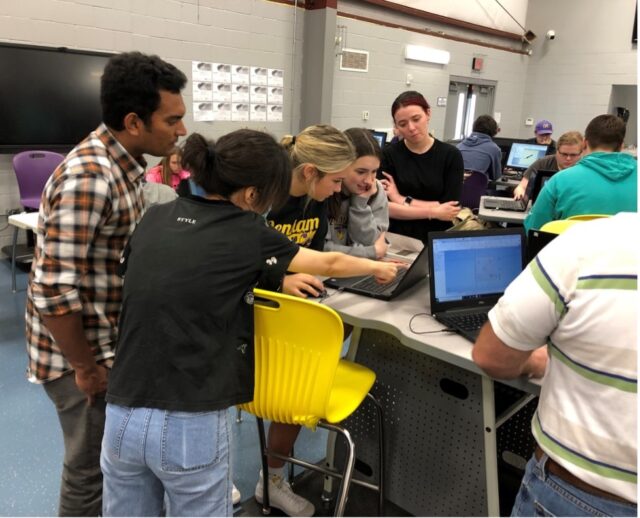
Mechanical Engineering students from Dr. Genevieve Palardy’s group work with Denham Springs High School STEM and Robotics Center students on their 3D printing model.
New and improved materials with shape memory properties engineered with computational discovery
Automated computational methodology was used to identify atomic properties that lead to enhanced shape memory effects (SME). These were then used to engineer epoxies and hardeners with predicted SMEs better than any that have been found, to our knowledge.
Shape memory polymers (SMPs) return to their original shape upon stimulus, such as increased temperatures, exerting a force known as the recovery stress. A high recovery stress can be used for many tasks, such as sutures that auto-tighten with body heat, and materials that can self-heal cracks by simply heating it up.
SMPs have many applications due to their remarkable ability to change shape in response to external stimuli, such as actuators in smart medical devices that can expand or shrink once the desired location is reached, as self-closing sutures, and in self-healing materials to aid in closing cracks. However, the force exerted during these processes, called recovery stress, is often not strong enough for their widespread use.
Traditionally, to discover and test new SMPs with strong recovery stress could take up to a year, making it a time-consuming and costly process. Fortunately, LAMDA researchers have developed computational methods that can rapidly test SMPs without the need for physical synthesis in the lab, providing results within a week. In addition, the research team has identified atomic fingerprints that can improve the recovery stress of SMPs, further moving beyond the traditional trial-and-error approach to SMP design. This knowledge has enabled the development of a high-throughput screening process that can estimate thousands of possible SMP candidates. Using this approach, we have proposed new SMPs with predicted higher recovery stresses than any previously reported and these advancements in SMP research have the potential to greatly expand their utility and impact on various fields, from biomedical engineering to aerospace.
Dr. Pouria Nourian, a postdoc researcher at Louisiana Tech, compiles a report for his work on topological fingerprints for thermoset shape memory polymers.
Embedding Conductors Using MELD Additive Friction Stir Deposition (AFSD) Manufacturing
Conductors have been embedded into a metal part using a solid-state additive friction stir deposition MELD process as a proof of concept. Embedding conductors and sensors into larger-scale metallic hardware during their manufacture is a transformational advance that will make them suitable for integrated, intelligent engineered systems in service.
Making metallic hardware with conducting paths and sensors embedded during their manufacture will enable integrated intelligent engineered systems that are more robust, safe, and reliable. They will enable preventive maintenance, rather than reactive maintenance, and the continuous monitoring and control of associated industrial processes.
The MELD additive friction stir deposition (AFSD) process is ideal for 3D-printing or repairing larger metal hardware/structures quickly and cost-effectively for aerospace, shipbuilding, automotive, process and energy industry applications. In this solid-state, high-material-deposition-rate process, working temperatures remain below the metal and alloy melting points, producing better material and part property outcomes.
For example, the military is researching AFSD to make armored vehicle hulls, build large parts for ships, and to use for field repairs. The aerospace industry is exploring AFSD to make space-vehicle and aircraft sections. Embedding conductors/sensors in such metal builds would keep critical electrical/electronic paths and components integrated, distributed, and protected within the material of the resulting parts and systems.
Louisiana State University’s Engineering Capstone Design Team 52 is embedding conductors in aluminum builds using MELD AFSD. The team is advised by LAMDA researchers, and funding for the project is provided by the LSU Mechanical and Industrial Engineering Department and the National Center for Advanced Manufacturing. A first proof-of-concept test has been successfully completed.
A team of undergraduate students from Louisiana State University has embedded conductors into a metal part using a solid state additive friction stir deposition MELD process. This LSU Capstone Design project was proposed and is directed by Dr. D. E. Nikitopoulos, co-sponsored by the LSU Mechanical & Industrial Engineering Department and through the National Center for Advanced Manufacturing (NCAM), and advised by Dr. S. M. Guo and graduate student Hamed Ghadimi. Pictured, from left to right: Chris Pugh, Mason Pesson, Hamed Ghadimi, Justin Stevens, Karli Beck. Photo by S.M. Guo.
A Hybrid Shape Memory Polymer-Filled Metallic Foam Composite with Multiple Functionality
Using advanced mechanical design and manufacturing techniques, LAMDA researchers have developed a lightweight shape memory composite using aluminum metallic open-cell foam as a skeleton that is filled in with a very tough shape memory polymer. The hybrid composite exhibits excellent mechanical properties and possesses the ability to restore its original shape when deformed and strain sensing capability.
The hybrid foam enhances sandwich structures due to its super lightweight capability. This type of hybrid composite can be beneficial in many industrial sectors that have a need for a material with a combination of high strength and toughness, low weight, damage sensing, and excellent energy absorption capabilities. This will help NASA and other space exploration agencies to increase the deployment of lightweight smart composite structures to space and provide the Department of Defense with new materials for development of equipment for national security.
What explanation/background does the lay reader need to understand the significance of this outcome? (1-2 paragraphs that might include, for example, more on who, when, where; NSF’s role; support from multiple directorates/offices; what makes this accomplishment unique; additional intellectual merits; or broader impacts such as education, outreach, or infrastructure improvement that are integral to this outcome; suggested 150-word maximum)
Lightweight composite structures are widely used in aviation, automobiles, ships, medical equipment, construction, etc. When used in transportation, a huge gain in energy efficiency is realized due to their lightweight architecture. Of the majority of research currently conducted in lightweight structures, very few focus on improving the reusability of these hybrid composites. The disadvantage is that metal foams possess very weak compressive strength and tend to fail under compressive loads. Guoqiang Li’s research group supported by LAMDA has improved the design and manufacturing procedure for making the hybrid composite structure that can resist compression loading. The very tough matrix system improves the compressive property of the hybrid composite and also enables the foam to recover the deformed shape when damaged due to the shape memory effect of the tough polymeric matrix system. This breakthrough will enable other researchers to improve upon their choice of material selection in fabricating lightweight open cell foams and sandwich composite structures.
John Konlan, LSU Mechanical Engineering Ph.D. student and LAMDA researcher (left), holds a hybrid-aluminum metal foam shape memory polymer composite, and LSU Mechanical Engineering undergraduate student Jenny Deicaza (right), holds a shape memory polymer composite.
Automated Defect Analysis of Additively Fabricated Metallic Parts using Deep Convolutional Neural Networks
LAMDA researchers have developed a trained network capable of segmenting the unbalanced classes of pores and cracks with a mean Intersection over Union (mIoU) value of 82% on the test set, thereby reducing the characterization time from a few weeks to less than a day compared to conventional manual methods.
The results show that artificial intelligence (AI) architectures are able to mimic human experts up to 82%. However, full reliance on erroneous human-labeled data prevents leveraging the full discrimination capacity of the AI architectures. This brings up the necessity of uncertainty analysis of manually segmented images and applying zero-shot learning.
In the Industry 4.0 era and the emergence of additive manufacturing (AM) and digital twins, data-driven material development and manufacturing process optimization has become possible due to the abundance of data. Finding the correlation between the parameters throughout the process can help researchers simulate and adjust the parameters in a controlled way to get superior material properties. Currently, the most feasible solution to huge amount of available data is AI-assisted data processing.
X-ray Computed Tomography (XCT) is an effective nondestructive evaluation of AM parts. A key factor in interpretation of the experimental X-ray imaging data is segmentation into images with information content close to ground truth. To address this issue, automated evaluation and quantification of a large tomography dataset of a Ni-939 sample fabricated using L-PBF method is studied. The results show that AI architectures can mimic human experts up to 82% for detecting cracks and pores inside AM samples.
Illustration: AI outperforming a human expert (ground truth mask) during network training.
Neutron Imaging of Al6061 Prepared by Solid-State Friction Stir Additive Manufacturing
Solid-state Additive Friction Stir Deposition (AFS-D) is a versatile, low temperature metal additive manufacturing process which may be used to build, coat, join or repair three-dimensional, large metal components. AFS-D has recently gained attention for the capacity to fabricate large-scale parts. LAMDA researchers have employed neutron imaging techniques with 90% total transmission per centimeter, to study AFS-D fabricated Al6061 parts for the first time. The results show the fabricated parts with an optimized set of processing parameters are free of voids.
Neutron imaging has shown to be effective in nondestructive evaluation of large additive manufactured parts. This research has made it possible to make use of cutting-edge facilities at Oak Ridge National Laboratory and improve the collaboration between LAMDA researchers, the industry sector, and National Lab scientists.
Additive Friction Stir Deposition (AFS-D)—commonly known as the MELD® process—is a solid-state additive manufacturing technology inspired by the Friction Stir Welding process and capable of fabricating large parts with relatively simple geometries, making it an ideal fabrication method for the aerospace, defense, and ship building industries. However, finding the optimized set of processing parameters and controlling the uncertainties is a crucial factor for the qualification of the fabricated parts.
For metal additive manufactured items, a neutron beam, as opposed to an X-ray beam, can penetrate deep into most of the materials and is a suitable choice for the non-destructive evaluation of the internal features of large objects. Therefore, neutrons are the perfect choice for investigating the internal features of Al6061 MELD samples. Signs of hydrogen contamination are observed in the fabricated part, which are most likely due to the hydrocarbon-based lubricant used during the deposition process.
Illustration of transmission images: (a) a 10-mm-thick slab with 1 mm layer thickness; (b) a 10-mm-thick slab with 2.5 mm layer thickness. The vertical feature is the result of surface roughness, not internal defects. Encircled area shows the layering structure; (c) A 20-mm-thick slab with 2.5 mm layer thickness. The interlayer regions are clearly visible in this image and shown with arrows. This snapshot shows 11 deposited layers, denoted on the image (Layer 1, L2, … L11).
Computationally-guided design of new multiphase alloys
LAMDA researchers combined physics-based simulation methods and experimental validation to design new alloys suitable for solid state friction stir-based additive manufacturing. These new alloys have special properties, namely coexisting metal phases with specific compositions.
Friction-stir-based 3D metal alloy printing (FSAM) is a new high-throughput additive manufacturing technology with promising applications to aerospace and other industrial sectors. Alloys with balanced mechanical properties, including controlled dependence of strength on temperature, are needed for FSAM, and the researchers demonstrated a computation-forward pathway for designing such materials.
FSAM fabricates alloy parts additively through softening and plastic deformation of the feedstock by friction-induced temperature increases without causing melting. Ideal alloys for FSAM exhibit high strength at operating temperatures but lower strength during fabrication to facilitate the AM process. As established alloys may not possess such balanced mechanical properties, identifying suitable new alloys becomes important. The strategy was to identify new alloys exhibiting a transformation from multiple phases to a single phase as temperature increases, with a consequent change in mechanical properties. The vast composition space of complex concentrated alloys offers a test case for this strategy, to address the research challenge of establishing an efficient protocol for searching through the composition space. By combining thermodynamic modeling and atomistic simulations, we demonstrated that new alloy compositions can be identified in a high-throughput manner and validated our predictions with experimental synthesis and characterization.
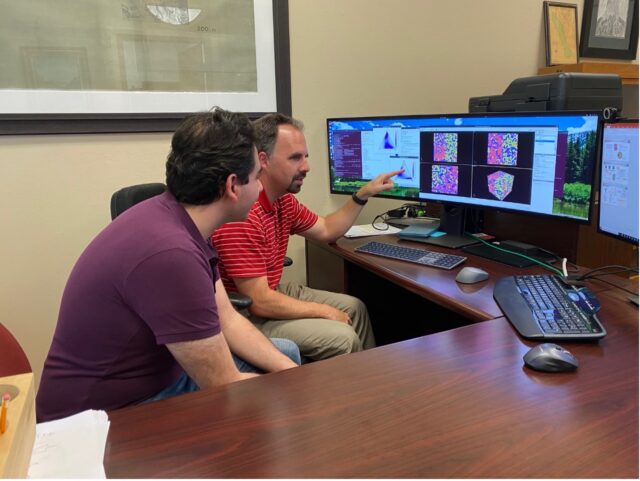
Louisiana Tech University graduate student, Hamid Sharifi Torki (left), and Dr. Collin Wick (right) discuss results from modeling complex conjugated alloys in instances where they demix.
New Hybrid Polymeric Syntactic Foams Developed
LAMDA researchers developed the concept of hybrid polymeric foams consisting of both an open-cell structure and syntactic foams. Using this concept, the research team prepared, tested, characterized, and modeled a shape memory polymer (SMP) hybrid foam with two-way actuation properties. The effect of the open-cell porosity on the two-way SMPs was also studied for the first time.
This study introduced two new classes of materials: hybrid foams consisting of both open-cell and hollow glass microbubbles (HGMs), as well as open-cell SMPs. In particular, the combination of these two creates game-changing options for lightweight controllable filtration, insulation, acoustic, absorption/retention, and actuator devices.
The addition of two-way actuation, which means the shape conversion can be reversible, improves the current use of foamed polymers that can be tailored for many new applications.
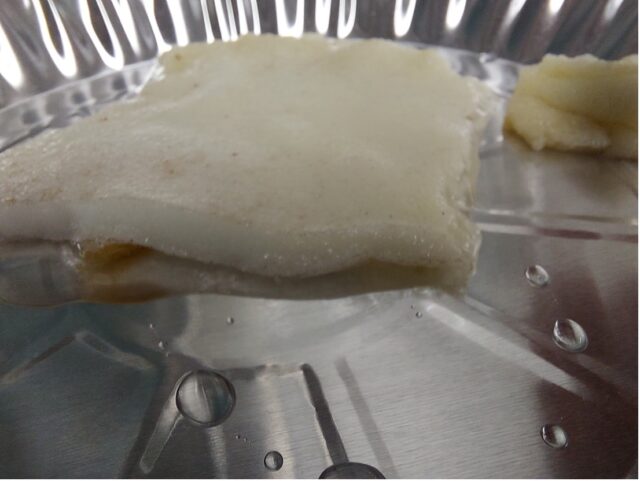
A sample syntactic-hybrid based open-cell shape memory polymer foam retaining a great amount of water, showing one if its great potential applications considering its two-way actuation capabilities.
New laminated vitrimer composites developed with unique restoration properties
Using a self-healing vitrimer-based shape memory polymer, a cohort of LAMDA researchers have developed a multifunctional composite laminate with strain sensing, delamination self- healing, deicing in low temperature cryogenic environments, and room temperature shape restoration. The laminate provides new approach to multifunctional laminate design and manufacturing.
The laminated hybrid composites have potential applications in frozen temperate regions. This will help NASA and the U.S. National Laboratories to design and test new satellites for exploring extremely cold environments like Antarctica. It will also facilitate U.S. space exploration agencies to increase the deployment of lightweight smart composite structures to space by reducing cost for space travel.
Lightweight composite structures are widely used in aviation, automobiles, ships, medical devices, construction etc. When used in transportation and unmanned aerial vehicles, a huge gain in energy efficiency is realized due to their lightweight architecture. For the majority of research conducted in lightweight structures, very few focus on self-healing and utilization in adverse environments. The drawback is that most of the lightweight composites are non-conducting, limiting their usage in multifunctional applications. Guoqiang Li’s research group has conducted experiments and improved the design and manufacturing procedure for making the hybrid composite structure. They use a novel vitrimer-based shape memory polymer with covalent adaptable network (CAN) as the matrix and reinforced with conducting sinusoidal Shape Memory Alloy (SMA) z-pins. The idea is that the SMA z-pins will facilitate the heating, closing up of delamination and aiding with healing in-situ without human intervention. This smart composite system extends the service life of the laminate in adverse temperature regions, resulting in smart, sustainable lightweight structures for engineering applications.
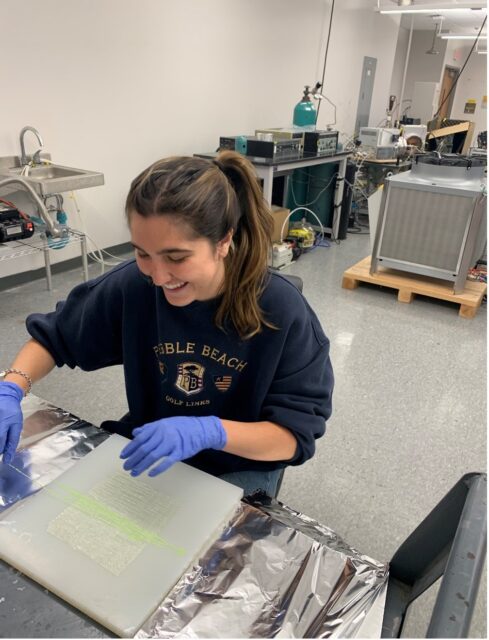
Louisiana State University student Isabella Sabbaghian works on a laminated composite.
Strong and flexible 4D printed lightweight metamaterials with record high recovery stress
LAMDA researchers have developed novel inverse design techniques which optimize the strength and shape recovery of lightweight structures by 30 -50%, compared to existing optimal metamaterials.
This research identifies key observations in the structural behavior of lattice structures under compression which is otherwise not discovered in previous studies. Also, the researchers propose novel optimal structures through a data-driven inverse design framework that exponentially save computational time and effort.
In this research, techniques like machine learning, data analysis and correlation analysis were used to construct the inverse design framework. These techniques are a part of artificial intelligence and can provide logical predictions when trained with datasets for lightweight structures and their mechanical properties.
Lattice structures are formed by connecting several thin rods in different orientations. Thin-walled unit cells were mimicked from natural structures such as honeycomb, bamboo stem, etc. These structures possess excellent structural properties due to their porosity and can be optimized to possess superior mechanical properties using the researched techniques, saving computational time and effort, with minimal human interaction.
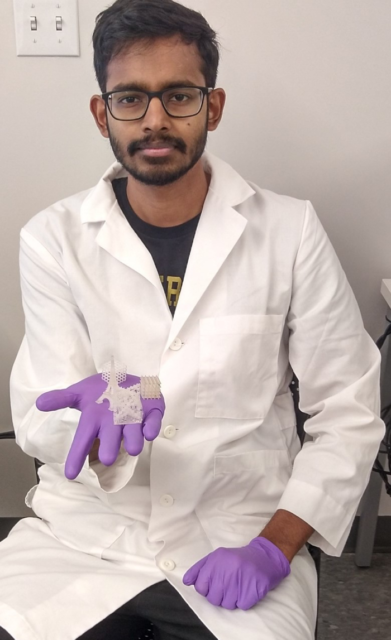
Mr. Adithya Challapalli, a Ph.D. student in the Louisiana State University Department of Mechanical & Industrial Engineering, is holding several 4D printed lattice structures.
More: See articles and research highlights from 2022 and earlier

